
views
Storing Tomatoes at Room Temperature
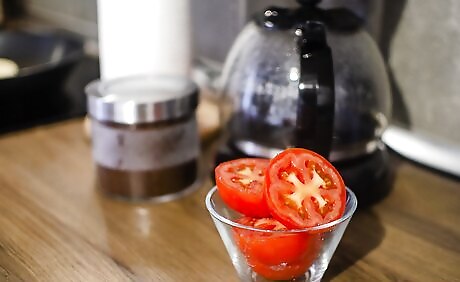
Store the halved tomato in a cool, clean, place. If you are not going to refrigerate your tomato and will be able to eat it within 24 hours, it is important to find a clean, cool place in your kitchen to store it. Never put cut tomatoes above a stove, under a sink, or any place prone to high or low temperatures. The ideal storage temperature for tomatoes is somewhere between 55 and 70 degrees Fahrenheit, or between 12 and 21 degrees Celsius, so be sure your kitchen maintains a consistent temperature. Only store halved tomatoes in room temperature. If you have diced or chopped your tomatoes, you must refrigerate or freeze them.

Cover the cut side of the tomato with plastic wrap. If you are not going to store the tomato for long, and plan to use the rest of the tomato for another meal in the same day, you can cover the vulnerable side of the tomato without it going bad. Place the plastic wrap on a clean counter, set the cut side of the tomato down, and wrap it in the plastic wrap.
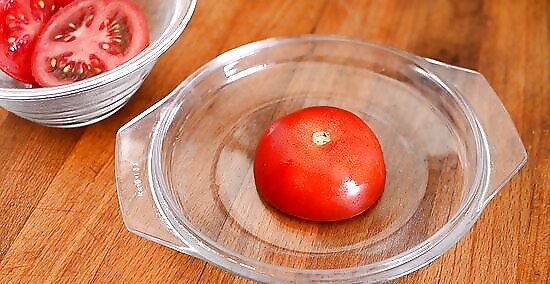
Place the tomato cut-side down on a plate. Leave the plated tomato in a cool, clean place in your kitchen. You can also lay a paper towel down on a plate, and set the tomato cut-side down on the paper towel.

Cover the other side of the tomato with a paper towel. With the cut-side of the tomato down on the plate, lay another paper towel over the skin-side. This will keep the tomato from collecting bacteria and drying out. It will also allow the tomato to keep its natural color and texture for at least one day.
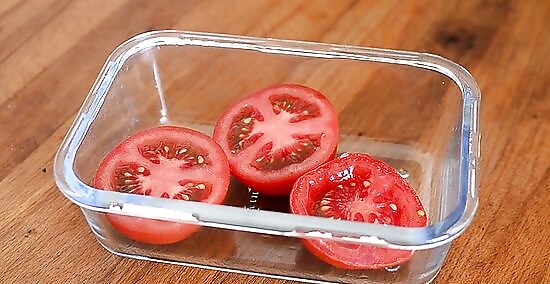
Place the halved tomato in an airtight storage container and leave it out. If you have airtight tupperware containers, place a paper towel at the bottom of the container and set the halved tomato down cut-side down. Leave the container in a cool place for one day, or until you want to use it for another meal.
Storing Tomatoes in the Refrigerator or Freezer
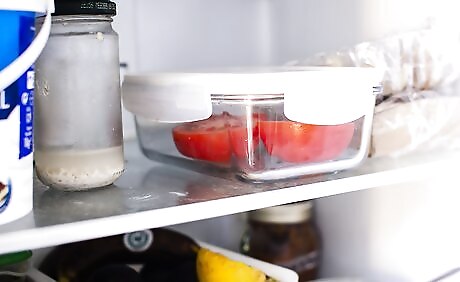
Refrigerate the tomato if you cannot eat it in a single day. Although refrigerating halved tomatoes can alter the texture and taste of the tomato, refrigeration is the only way to keep a halved tomato from going bad too quickly. Wrap the halved tomato in plastic wrap and place it in the refrigerator for three to four days. You can also place the halved tomato in air-tight tupperware container with the cut-side down on a paper towel to improve the tomato’s longevity.
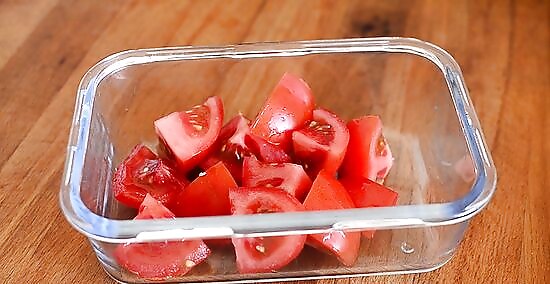
Place chopped tomato in a storage container in the fridge. Unlike a halved tomato, chopped tomato must always be kept in an airtight container and refrigerated. Chopped or diced tomatoes are more vulnerable and susceptible to foodborne illness, such as salmonella, and must be protected and refrigerated as quickly as possible. Cut tomatoes should be kept at no less than 41 degrees Fahrenheit, or 5 degrees Celsius.
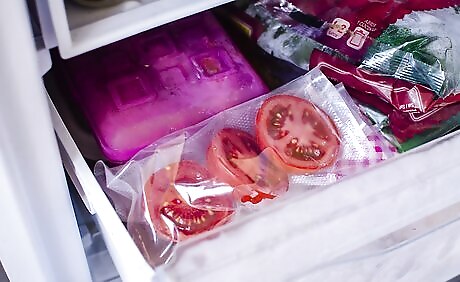
Freeze chopped or halved tomatoes to save them for longer than three to four days. Cover the exposed side of the tomato and place it in an airtight container. Although freezing tomatoes will alter the texture and taste of the tomato, freezing it will keep it from going bad for up to two months. If you are going to freeze the tomato, consider using it as an ingredient in a soup or sauce after it thaws, for it will lose much of its regular texture.
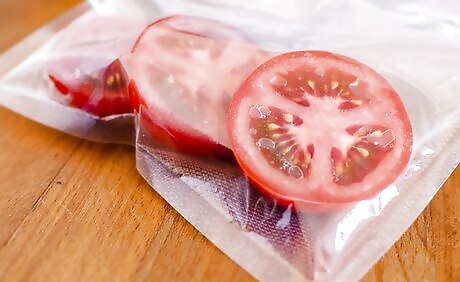
Take the tomato out of the refrigerator 30 minutes prior to eating it. Bringing the tomato back to room temperature before eating it or using it as an ingredient in a meal is important for the tomato’s texture and taste. When letting the tomato warm, cover the cut side of the tomato with plastic wrap or a paper towel and place it cut-side down on a plate. Thawing a frozen tomato will take longer, so consider taking it out an hour or two before using it.
Using the Tomatoes in New Meals
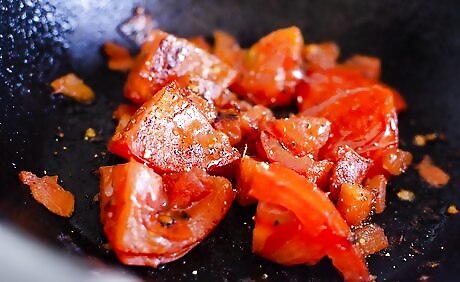
Cook the tomato. After freezing or refrigerating a tomato, it is best to cook with the tomato in a way that masks the change in its texture. Because refrigeration will alter the tomato’s natural texture, it is best not to slice the tomato for a salad or eat it as-is. Cooking with the tomato, perhaps by creating a pasta sauce or baking it in the oven with olive oil for a salad, will mask the fact that the tomato has been refrigerated.
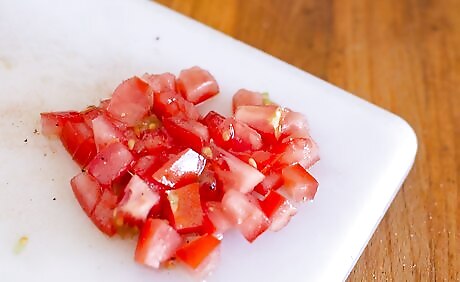
Turn the diced tomato into a salsa. Use the chopped tomato to create your favorite kind of salsa, adding lemon or vinegar to acidify the tomato. By adding these acidic ingredients to a salsa, you will keep the tomato’s pH level below 4.2, which is what the FDA suggests. Once made into a salsa, the tomato simply needs to be kept below 41 degrees Fahrenheit, or 5 degrees Celsius, in a refrigerator.
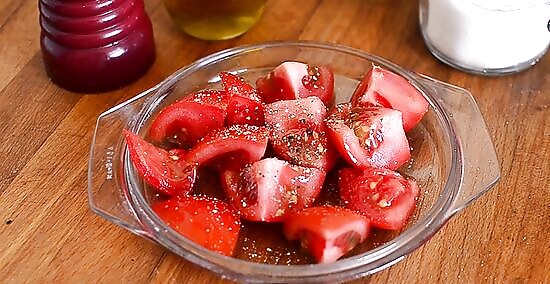
Marinate the tomato with salad dressing. Place the chopped tomato in a container and add your favorite lemon or vinegar-based salad dressing. These ingredients will keep the tomato from spoiling. You can keep the tomato and salad dressing together for two to three days, but you should try to eat the tomato as soon as you can. Once you are ready to eat the chopped tomatoes, you can quickly add them to your favorite salad.

Add fresh tomato to another meal and refrigerate it. If you have the time, create an entire salad or sandwich to eat later, and store the meal in the refrigerator. By taking the time to create a meal while the tomato is fresh, you will be more likely to eat the tomato before it goes bad, and you will not have to store the diced or chopped pieces by themselves in a storage container. This takes up less room in your fridge and you will not have to add any acidic ingredients to the tomato. However, you should eat the meal within two to three days.

Emulsify the diced or chopped tomato and add lemon juice. Emulsifying the tomatoes will allow you to make a soup or pasta sauce later on. With a blender or food processor, emulsify the tomatoes until they have are completely blended, adding some lemon juice to keep the pH level low. Store the mixture in an airtight container and refrigerate it until you are ready to create a soup or sauce later on.



















Comments
0 comment